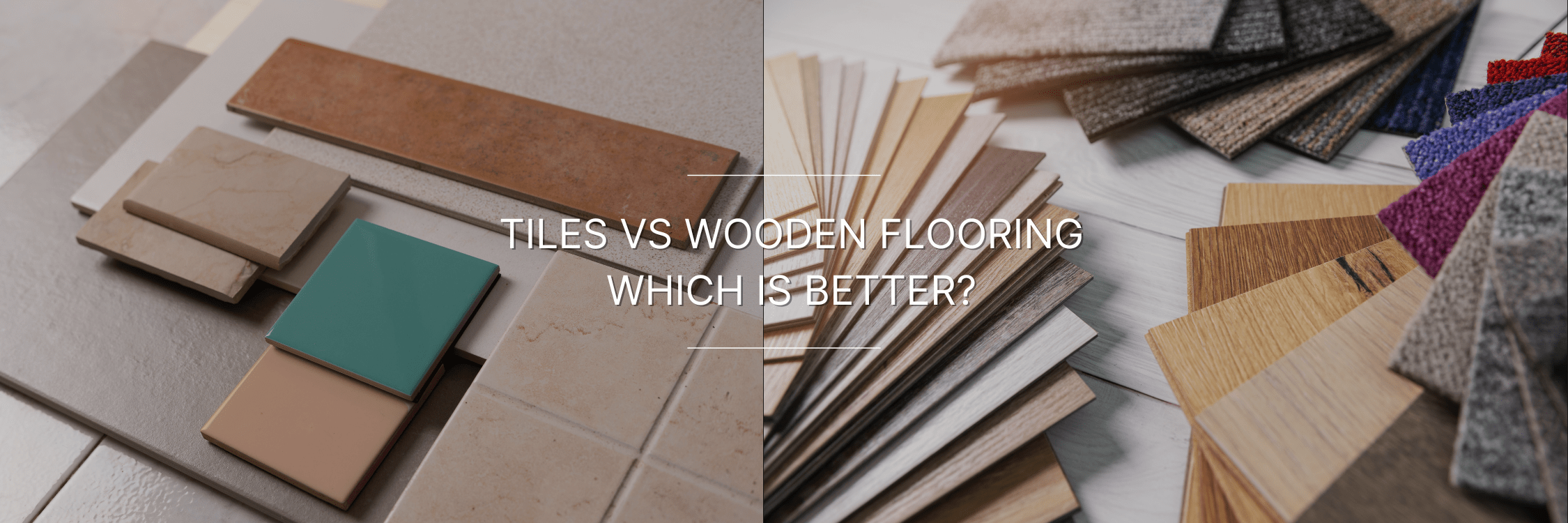Selecting the right flooring for your home can transform your living space, enhancing both aesthetics and functionality. Tiles and wooden flooring are two of the most sought-after choices for homeowners. Each offers distinct advantages, but which one truly stands out as the better option for your home?
The Appeal of wooden Flooring or Tile
Tile flooring is renowned for its durability and water resistance, making it an ideal choice for areas prone to moisture, such as kitchens and bathrooms. Tiles are crafted from materials like ceramic, porcelain, or natural stone, each offering unique properties and advantages.
Durability and Water Resistance: Tiles are exceptionally durable, withstanding heavy foot traffic and resisting scratches and stains. Their water-resistant nature makes them perfect for wet areas, where they can endure spills and humidity without damage.
Variety in Design and Color: Tiles offer an extensive range of design possibilities, from sleek modern styles to intricate patterns. They are available in numerous colors and textures, allowing homeowners to customize their spaces according to their tastes.
However, tile floors can feel cold underfoot and may lack the warmth and comfort that wooden flooring provides. They can also be prone to cracking if not installed correctly or if heavy objects are dropped on them.
The Charm of Wooden Flooring
Wooden flooring exudes a timeless charm and elegance that enhances any home. Its natural beauty and warmth make it a favorite among homeowners seeking a cozy and inviting atmosphere.
Aesthetic Appeal and Warmth: Wooden floors add character and sophistication to any room. Their natural grains and colors create a warm ambiance, making living spaces feel more inviting.
Comfort and Insulation: Wood is a natural insulator, providing warmth underfoot, especially in colder months. Its ability to retain heat can contribute to a more energy-efficient home environment.
While wooden flooring is susceptible to scratches and dents, its surface can be refinished multiple times to restore its beauty. This aspect, combined with its comfort and aesthetics, makes wooden flooring a preferred choice for many.
Cost Considerations and Installation
Cost is a significant factor when choosing between tiles and wooden flooring. The prices of these materials vary based on quality, design, and installation complexity.
Price Comparison Between Tiles and Wood: Tile flooring can be more affordable, especially when opting for ceramic options. However, high-end tiles and natural stone can become quite costly. Wooden flooring prices can range from affordable laminates to expensive hardwoods.
Installation Process and Time: Tile installation is labor-intensive and time-consuming, requiring precision and skill. Wooden flooring installation can be quicker, particularly with engineered wood and laminates that offer click-lock systems for easy installation.
The cost of installation should be considered alongside material costs, as professional installation ensures the best results for both flooring types.
Maintenance and Longevity
Both tile and wooden flooring require proper maintenance to ensure longevity and preserve their appearance.
Cleaning and Care for Tiles vs. Wood: Tiles are easy to clean and maintain, requiring regular sweeping and mopping. Wooden floors demand more care, needing specific cleaners to avoid damaging the finish.
Lifespan and Wear: Tiles have a long lifespan and can last decades with minimal wear. Wooden floors, while prone to scratches, can be refinished multiple times, extending their life significantly.
Understanding the maintenance needs and durability of each flooring type is crucial in making an informed decision that fits your lifestyle.
Environmental Impact and Sustainability
For eco-conscious homeowners, considering the environmental impact of flooring materials is essential.
Eco-Friendliness of Materials: Tiles, especially those made from natural stone, have a minimal environmental impact. Wooden flooring, particularly sustainably sourced wood, is a renewable resource that offers an eco-friendly option.
Energy Efficiency: Wooden flooring’s natural insulation properties can enhance a home’s energy efficiency, reducing the need for artificial heating.
Considering sustainability in your flooring choice not only benefits the environment but also aligns with growing trends in eco-friendly home design.
Conclusion: Why Choose Wooden Flooring?
While both tiles and wooden flooring have their merits, wooden flooring often stands out for its unparalleled charm, comfort, and versatility. Its ability to create a warm and inviting atmosphere, along with its long-term value, makes it a preferred choice for many homeowners.
Vista Wooden Flooring offers a premium selection of wooden floors that combine beauty and durability. With multiple shades and styles available, Vista’s collection caters to diverse tastes and needs. Whether you’re seeking a classic look or a modern twist, wooden flooring from Vista provides the perfect foundation for your home’s design.
Ultimately, the choice between tiles and wooden flooring depends on your personal preferences and lifestyle needs. By considering factors such as aesthetics, maintenance, cost, and environmental impact, you can select the flooring that best complements your home.



